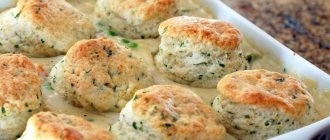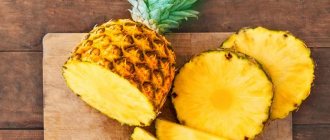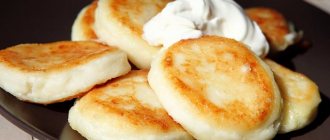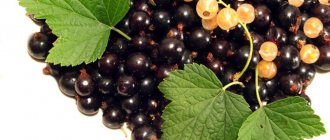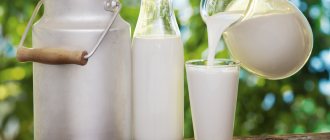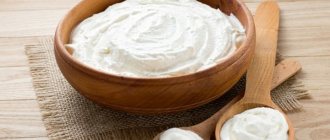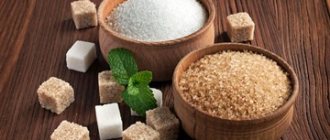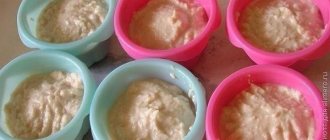The mother’s diet immediately after childbirth should first of all be varied, the menu rich in meat, fish, various cereals, fruits, vegetables, grains and dairy products. Do not forget that now the baby receives all the “building materials” for the body exclusively from mother’s milk.
Several main vitamins and minerals that children often lack through breast milk: vitamins A, C and D, iron, calcium. Pay special attention to the products:
- Meat, chicken, and fish are rich in iron, from which it is best absorbed, unlike plant products. Lack of iron leads to anemia, fatigue, and moodiness. Moreover, this applies in this case to mother and child. Vegetarian mothers who do not consume foods of animal origin need to take plenty of plant-based proteins, as well as vitamin and mineral complexes with iron and vitamin B12.
- If the baby does not have enough calcium to grow, then he will take it from the mother’s body, her bones. They will become fragile and brittle, the risk of fractures will increase, and dental problems will begin. Make sure you have enough dairy (milk, yoghurt, cheese, cottage cheese) and other calcium-rich foods (broccoli, egg yolks, celery, cabbage) in your diet. Remember that in the first six months of breastfeeding, the body should receive 1400 mg of calcium. If you don't get enough of it from food, talk to your doctor about taking vitamins. In addition to calcium, they must also contain vitamin D so that calcium is absorbed.
- Vitamin A is necessary for the development of the visual apparatus, respiratory system, and skin. Egg yolks, butter and carrots are rich in it.
- Vitamin C improves immunity. There is a lot of it in citrus fruits (lemons, oranges, grapefruits), but these fruits are strong allergens. You need to eat them carefully, watching your baby. And even if there is no allergic reaction, eat no more than one or two oranges or grapefruits per day
- Drink more water (water, not other liquids). One and a half to two liters a day will allow the body to properly absorb food and function normally.
What can you eat
Experts say that if the mother and newborn are absolutely healthy, they are not bothered by constipation and bloating, there is no need to adhere to a strict diet. Only minor food adjustments will be required. What can a nursing mother eat:
- Boiled veal, chicken fillet, turkey or rabbit meat, meatballs are allowed.
- Soups containing vegetables with no distinct color. Very good - soup with meatballs.
- Exclusively lean fish, such as cod or carp, pike perch. It is baked, stewed or boiled a couple of times a week.
- Curd and cheese, heat-treated. It’s good to make cheesecakes and cottage cheese casserole.
- Lactic acid products, only low-fat ones.
- Vegetables are good fresh or stewed, at least 400 g per serving.
- Berries and fruits - from 300 g per day.
- Wheat and oat porridge, from rice, buckwheat or corn.
- Eat bread with bran, rye, coarsely ground.
- Sweets can be replaced with a mixture of dried fruits. Compote made from prunes or dried apricots will be delicious.
- Butter – up to 25 g per day.
- Sunflower oil – up to 15 g per day. You can use olive or corn oil instead.
- Potatoes.
- Pasta and products made from it.
- Crackers and biscuits.
Cow's milk can be included in the diet in very small quantities to avoid the development of allergies in the baby.
What products are required
Dr. Komarovsky conventionally divides all products into five groups. The daily menu of any person, including a nursing woman, should include at least one product from each group. If a young mother adheres to a special diet (vegetarianism or another), she should consult a doctor to add nutritional supplements to her diet that will help maintain the health of both her and her baby.
Products allowed during breastfeeding - table
| Product group | Examples |
| Cereals, flour products | Rice, buckwheat, corn, millet, oatmeal, pasta, bread without additives, biscuits, hard biscuits without additives |
| Vegetables | Boiled zucchini, potatoes, cabbage, carrots, beets |
| Fruits, dried fruits, berries | Yellow, green apples, pears, bananas; dried apples, pears, prunes; white, black currant, gooseberry |
| Meat or fish | Turkey, rabbit, lean pork; hake, pollock, cod, sea bass |
| Dairy | Kefir, natural yogurt, cottage cheese, sour cream, fermented baked milk, butter, hard and semi-hard cheese |
What is it better for a nursing mother not to eat in the first month?
Although during the lactation period food should be varied and nutritious, some foods should be abandoned. These include:
- fatty meats, especially fried (goose, pork, duck);
- any semi-finished products (sausages, sausages, etc.);
- mushrooms;
- sweet baked goods;
- nuts;
- citrus fruits, other fruits and red berries;
- concentrated meat broths;
- canned food;
- red bell pepper;
- legumes;
- ketchup and spicy sauces;
- cabbage, radish, radish;
- garlic and onion;
- alcoholic and carbonated drinks;
- rich tea and natural coffee.
Refusal of such food prevents negative consequences for the baby and helps a woman get rid of excess weight.
Basic principles of nutrition
The selection of diet must be approached responsibly. Products must be of natural origin and not expired. Healthy eating will help you recover faster after childbirth and prevent digestive disorders in the newborn:
- always try to eat at the same time in small portions;
- dishes should be served baked, boiled or stewed; marinated, fried and smoked products are excluded;
- a large role is given to fresh fruits and vegetables, as well as cereals;
- exotic fruits are not consumed, especially if the woman has not tried them before;
- a balanced diet should be ensured.
Naturally, it is necessary to create an adequate drinking regime. The liquid is drunk before meals or half an hour to an hour after meals.
Attention: allergens
Nutrition for a nursing mother after childbirth involves excluding some foods that are most harmful. In addition to alcohol and canned food, these are:
- milk. There is a popular belief that the diet for breastfeeding mothers includes goat's milk to provide nutrients. But such an approach can lead to the development of lactose allergy in a child. You won’t have to give up dairy products in the form of kefir and yogurt;
- egg whites. Especially chicken ones, because goose and duck ones are less dangerous. Eggs can be eaten hard-boiled while breastfeeding. Quails pose the least danger to a baby.
- When feeding during lactation, fresh meat should be placed in the freezer to reduce the concentration of allergens.
For the health of the child, proper nutrition for a nursing mother must be combined with proper rest during sleep for 8 hours. A woman will be able to please herself with foods that will be prohibited after the end of the feeding period, but until then, care should be taken in preparing the diet. The health and full development of the baby depends on this. A mother who ate healthy foods and followed the rules of diet when feeding newborns ensured healthy growth for her children.
The maternal body requires complete special nutrition after childbirth for a nursing mother after a difficult period of pregnancy. After childbirth, the baby needs comfortable adaptation to new conditions and way of eating. All these factors require a responsible approach to creating postpartum diets for nursing mothers.
Interesting recipes for nursing mothers in the 1st month
Despite the existing prohibitions, you can come up with a lot of different dishes that contribute to the harmonious development of the baby.
Breakfast
In the morning, porridge is good, initially gluten-free (buckwheat, rice and corn, boiled in water). You are allowed to add a little butter.
A couple of times a week they eat low-fat cottage cheese instead of porridge. For drinks, we recommend an infusion of rose hips, weakly brewed green or black tea. To improve lactation, you can try special herbal teas. Any liquid should be drunk in moderation. Its excess promotes lactostasis, and its deficiency leads to dehydration.
The standard water consumption is 2.5 - 3 liters per day, including liquid taken with food. ½ of this should be boiled water.
Dinner
Make it a rule to eat soup every day, because hot liquid stimulates milk secretion. First they eat regular vegetable broths, after a week they try fish or meat ones. Some advise adding garlic there, claiming that when boiled it does not affect the taste of milk. Greens make food easier to digest.
Whole grain bread containing bran and crispbread is healthy.
For the second course you can stew zucchini, potatoes, and boil pasta. Be sure to eat meat - 100 g/day. Wash down with compote from a mixture of dried fruits.
Hypoallergenic diet while breastfeeding
Everything a nursing mother eats affects the composition of breast milk. However, this does not mean that you need to eat buckwheat and boiled chicken. On the contrary, the diet should be interesting and varied. The more products it includes, the lower the likelihood that the baby will become allergic.
An error in the mother’s diet manifests itself in the form of vomiting, belching, whims, bowel disorders (diarrhea, prolonged constipation), atopic dermatitis, etc. Some of the listed symptoms may indicate intolerance, so the best solution would be to consult a doctor.
To establish the presence of an allergy, you need to keep a food diary: write down your diet and the symptoms that occur in your baby. Then you can eliminate foods in an orderly manner and monitor how the child’s well-being changes. The main thing is to do this under the supervision of a pediatrician or lactologist. He will tell you how to replace excluded foods in order to get enough nutrients.
A child may be allergic to whole milk, sour cream, cheeses, kefir, cottage cheese, yoghurts, butter, and fortified nutritional mixtures. The list of safe foods includes bread, cereals (except semolina), lean meat and fish, vegetarian soups, seasonal vegetables and fruits.
Delicious first course recipes for nursing mothers
A dish prepared according to all the rules will avoid disturbances in the digestive process.
Buckwheat soup made in a slow cooker
Ingredients:
- buckwheat - a glass;
- potatoes – 200 g;
- onion - 1 piece;
- carrot – 1 piece;
- vegetable oil - a tablespoon;
- parsley - a tablespoon;
- salt - to taste.
Vegetables are thoroughly washed and peeled. Finely chop the onion, carrot and potato. Place onions and carrots at the bottom of a greased multicooker bowl and sauté for 10 minutes. in the "Baking" mode. Next, pour in the buckwheat, and after 5 minutes, add the potatoes. In 10 minutes. pour one and a half liters of water, salt. And cook the soup in the “Stew” mode for 60 minutes. Add greens 10 minutes before the end of cooking. If you want a twist, mix 1 egg with a tablespoon of water in a glass and pour into the broth in a thin stream.
Meatball soup
Minced meat is made from dietary meat in a meat grinder. Wait until the water boils in the pan and add the chopped potatoes, carrots and onions. After 15 min. small meatballs and vermicelli are added. After another 15 minutes. After boiling, add salt and sprinkle with herbs.
Fish soup
Boil cod or pollock for a few minutes. Drain the boiling water, clean the fish from the bones, and divide it into small pieces. Cut up fish, potatoes, carrots, onions and a little rice cereal are dipped into new boiling water. After waiting for it to boil, leave on low heat for another 20 minutes. Salted, decorated with herbs.
Second courses
Great attention is paid to the type of heat treatment.
Zucchini with yogurt
200 g of vegetables are cut into cubes and add salt. Place in a greased frying pan, cover with a lid and simmer for 15 minutes. Pour 100 g of yoghurt and simmer for a few more minutes. Decorate with greens.
Meatballs
400 g of minced meat is combined with a glass of boiled rice, an egg, salt and finely chopped herbs. Mix thoroughly. Form small balls. Simmer for half an hour in a frying pan under sour cream sauce, covered with a lid.
Steamed fish cutlets.
300 g of fish fillet along with the onion in a meat grinder, add a couple of tablespoons of bran, an egg, salt and mix thoroughly. After 15 minutes, cutlets are formed and placed on a special grill. Prepares in 20 minutes.
Compotes
First, use apple or pear compote. One ripe fruit is washed, peeled and seeded, and cut into slices. Place in a saucepan and add 500 ml of water. After waiting for the liquid to boil, cook for 5 minutes. Leave it covered for another hour to brew.
An infusion of a mixture of dried fruits is also recommended for consumption: 50 g of dried fruits are washed and poured with boiled water overnight. You can add sugar if desired.
Afternoon snack
For an afternoon snack, yogurt is allowed with the addition of pieces of peeled pears or apples.
Dinner
In the evening you can enjoy:
- Macaroni sprinkled with cheese and herbs.
- Meat stewed with rice.
- Buckwheat porridge with steamed cutlet.
- Cheesecakes and cottage cheese casserole made in a slow cooker.
- Pike perch stewed with potatoes or zucchini.
You can brew tea and drink it with marshmallows or crackers.
2nd dinner
Before going to bed, it is good to consume fermented baked milk or kefir.
Saturday
Breakfast: Millet porridge with pumpkin Lunch: Zucchini soup + Buckwheat porridge + Rabbit in sour cream Dinner: Liver and buckwheat pancakes + Carrot and dried apricot salad
What is allowed for a nursing mother in the following months?
Gradually expand the nutritious diet. New products are introduced slowly. If the baby does not have any disturbances in the gastrointestinal tract or skin rashes, they can be left.
The menu includes oatmeal and wheat porridge in water; you can dilute it with cream, add figs or dried apricots. Rarely eat 1 egg in the morning, no more, to avoid allergies.
It is suggested to try chicory. This drink normalizes intestinal function and contains no caffeine. You can serve oatmeal cookies with tea.
Soups are allowed to include beets, sorrel, and tomatoes stewed in a frying pan.
You can dilute with water and drink cherry or pomegranate juice. Slowly include currants (black and white), persimmon, melon, and watermelon into the diet. Children's curds and yoghurts are recommended.
Delicious recipes
Original food made from standard products will add unusual colors to a lunch or tea party with your family.
Curd banana smoothie
Ingredients:
- milk – 300 ml;
- cottage cheese – 100 g;
- banana - 1 piece.
Low-fat milk is poured into a large container, cottage cheese, washed, peeled and chopped banana are added. The contents are crushed with a blender. Ready-made smoothies are offered for breakfast or afternoon snack, or chilled.
Buckwheat-curd cutlets
Ingredients:
- buckwheat – 2/3 cup;
- water – 2 glasses;
- egg - 1 piece;
- cottage cheese -100 g;
- sugar, salt - to taste;
- breadcrumbs – 100 g;
- vegetable oil - a tablespoon.
The buckwheat is sorted out and poured into a saucepan, poured with water and cooked for 20 minutes after boiling. Leave for a few minutes to swell and cool. Place in a container and combine with low-fat cottage cheese, egg, sugar and salt. Form cutlets and roll in breadcrumbs. Simmer in a frying pan with the lid closed, remembering to turn over. The prepared dish will become an original dessert or addition to a main dish.
Menu features throughout the year
At different ages of the baby, nutrition during breastfeeding may differ. As the baby grows, some foods will become available. Let's take a look at the recommended dishes for a nursing mother by month:
- In the first 14 days, the diet when breastfeeding a newborn allows kefir, cottage cheese, porridge with water, boiled vegetables, dried bread, soup without frying, special teas and rosehip infusion.
- From 1 to 3 months, dried fruit compote, millet, and wheat porridge are allowed. Low-fat sour cream and lightly salted cheeses, beef, raw vegetables, and rabbit meat are allowed.
- From 3 to 6 months, the list of what you can eat while breastfeeding expands with beets and nuts. Pork with low fat content is allowed. Add freshly pressed juices to your diet. Pepper and thyme – very little.
- From 6 to 9 months, honey is added to the list of dishes during breastfeeding. The consumption of red fish is limited. At this stage, feeding allows some beans or peas and garlic.
- After 9 months to the 12th month, the young mother has the opportunity to add lemons to her diet during breastfeeding.
During all months of the baby's growing up, breastfeeding includes avoiding canned food, chocolate, smoked foods, fatty foods and alcohol. A particularly strict diet is observed in the first 30 days of life. A variety of dishes during breastfeeding will allow you to eat tasty and original. Family and friends can share recipes. The nurse will soon notice that her breastfeeding diet has become more appetizing.
